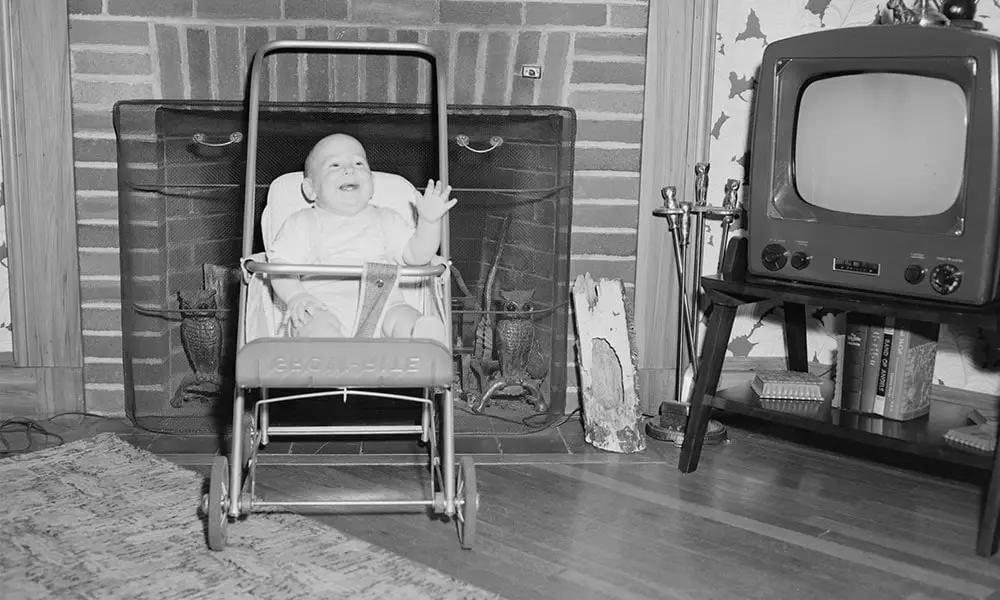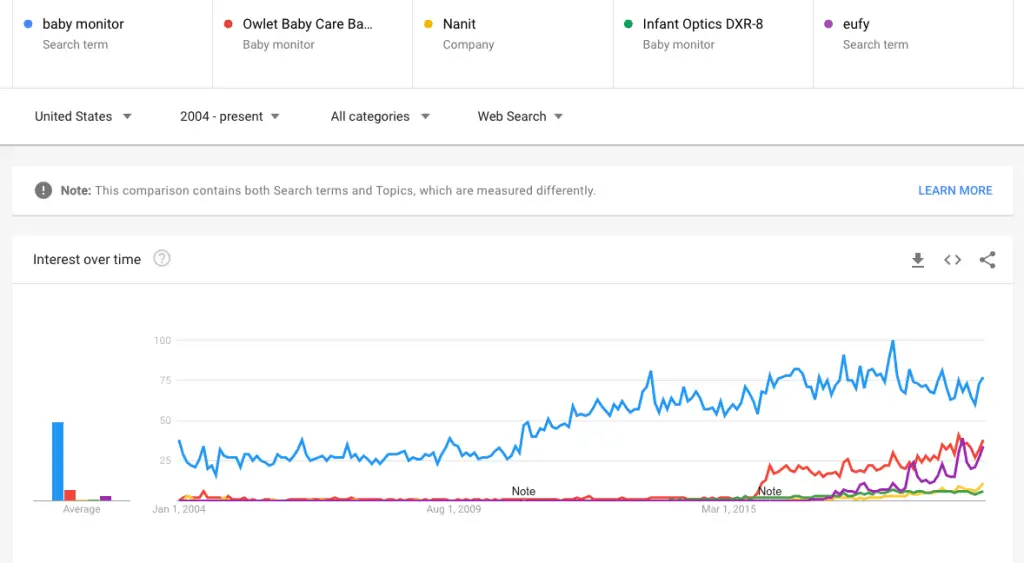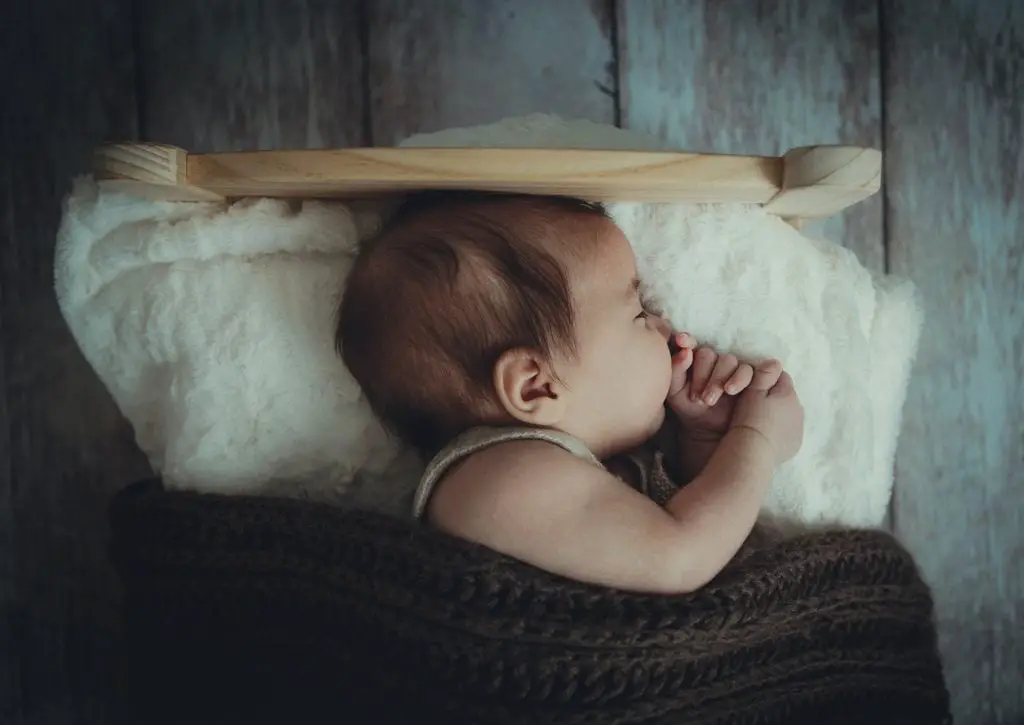Have you ever wondered how the baby monitor came to be? Who designed this remarkable lifesaving device that can literally pass off as an assistant robotic parent? Because how else are modern-day parents expected to keep an eye on their little ones 24/7 given our demanding schedules!
There’s no need to speculate. If you want to learn all about the interesting history of baby monitors, as well as what the future holds for this innovative device, you’ve come to the right place.
Let’s Start at the Beginning: When, Where, How, and Why Were Baby Monitors Invented?
One thing is for certain: baby monitors were non-existent a century ago. Grandmothers can confirm this fact and gladly remind us how they raised us the old-fashioned way (without the help of technology or robotics). So, what changed? Who decided to invent a baby monitor and why? Was it the brainchild of an anxious parent who was overwhelmed by constantly checking in on baby every five minutes?
I’ll have you know that the motivation behind the unit’s invention was under the most somber circumstances.

When were Baby Monitors Invented?
Baby monitors were first invented and released to the market in 1937. This was a revolutionary product that made parenting – for those who could afford it at least – a much less stressful endeavor. Unfortunately, the events that led to the need and subsequent invention of the first baby monitor were heartbreaking.
Why the First Baby Monitor Was Invented
It took a tragic kidnapping in 1932 for the first baby monitor to be invented.
On this fateful Tuesday night, Charles Lindbergh’s son – aged 20 months at the time – was abducted from his home. A ransom note was found in his room confirming these suspicions.
Charles was a prominent aviator in the United States of America. One would wonder how this could have possibly happened, given the fact that both the mother and nanny were at home on that particular day. Would this have happened if there was a baby monitor in the house? I’m inclined to think otherwise.
Heartbreakingly, a month later the remains of Charles Jr were found just a few kilometers away from the Lindbergh residence. Seeing as the incident was a high-profile case, it became national news and talk of the town. The story inspired Eugene McDonald who was then President of a company called Zenith to design the first-ever baby monitor.
The premise upon which this baby monitor was built was simple: to prevent a similar tragedy from happening to his child. Mr. McDonald placed the unit in his daughter’s room in an attempt to monitor noises coming from the room. It was only after he felt satisfied with the unit’s performance did he give his company the go-ahead to commercialize the product.
Baby Monitors Through the Ages
First Baby Monitor Design

The first commercial baby monitor was designed by Zenith engineers in collaboration with a Japanese designer.
It was known as Zenith Radio Nurse and was released to the market in 1937. Zenith Radio Nurse featured a very simplistic design and was built using radio technology. The unit was designed using a combination of radio equipment, speakers, and microphones that served to record noises. The monitor featured a baby and parent unit—much like today’s baby monitors. And because it wasn’t cordless, the monitor had to be plugged in the baby’s room. Sounds were transmitted via audio analog signals which operated on low frequency bands. The only issue with this kind of signal is that it only allowed for one-way communication. Parents could not talk back to their children.
Unfortunately, Radio Nurse was short-lived as the unit presented a number of problems including:
- Radio interference issues
- Affordability issues since it was rather expensive
- It didn’t work well with loud volumes
This led to the unit being scrapped off the market. But this only paved way for bigger and better baby monitor designs.
First Digital Baby Monitors
To address the drawbacks of analog baby monitors, digital models were introduced. Because such models operated on higher frequency bands it meant that the baby monitors now offered:
- Better signal transmission with minimal interference
- Improved audio quality
- Longer range and better coverage
- Slightly more affordable prices
First Wireless Baby Monitors
Around the early 1900s, wireless baby monitors were introduced. These baby monitors only allowed for one-way communication and were battery-operated. However, these units used very little power and also experienced less interference.
To date, modifications have been made to wireless baby monitors and as a result, they are still very much popular. Infant Optics, Vava or Eufy are examples of the most prominent wireless baby monitors. These devices allow parents to monitor their babies remotely without necessarily needing Wi-Fi.
First Two-Way Communication Baby Monitors
The first baby monitor that allowed for two-way communication was introduced in 1997. Parents could now soothe their little ones via the monitor by talking into the unit.
First Video Baby Monitor
In 1999, the first baby monitor that allowed parents to see their babies via a monitor was introduced. This design came about because of an increase in the number of cases involving nannies ill-treating babies.
First Baby Monitors to Use Wi-Fi
It was only in the year 2000 that monitors using Wi-Fi to transmit signals began to emerge. Baby monitors that used such signals enjoyed better picture quality and a more impressive list of features.
First Smart Baby Monitors
As of 2015, companies started manufacturing smart baby monitors. These units have artificial intelligence incorporated into the design. As a result, these new-age baby monitors have features such as:
- Sensory functions
- Ability to track vital signs such as your baby’s breathing patterns, heart and pulse rate
- Ability to track your baby’s sleep patterns
Nanit, Owlet, and Miku are examples of smart baby monitors that have increased in popularity ever since their introduction to the market. As you can see from the visual below, the search volume for baby monitors has risen dramatically over the last few years and shows no sign of letting up as the need to remotely monitor our children is ever on the increase.

As you can see, baby monitors are becoming more popular, sought-after, and searched for. So what does the future hold for this remarkable device? Let’s find out.
What is the Future of Baby Monitors?
A simple look at how the designs of baby monitors have evolved over the years confirms one thing: the basic premise upon which they operate is still pretty much the same. The units are meant to pick up sounds coming from the baby’s room and transmit them to the parents. So what does the future hold for baby monitors? Baby monitors are set to become even more popular over the next coming years with the market expected to grow at a rate of approximately 8.4% by 2026. The increased demand for the product is expected based on the following factors:
- The percentage of the working population (aged between 25 and 54) is expected to increase to 64% by 2024. And since a large percentage of the reproductive age group falls under this bracket, more working parents will be in need of the device.
- Given the ever-growing digital landscape, more parents are turning to the internet for purchasing decisions. Companies are taking advantage of this fact and will increase their marketing efforts by enhancing the visibility of the baby monitor online.
- Online awareness regarding infant safety is also expected to increase which will, in turn, prompt parents to realize the unit’s value.
Emerging Technology
It’s not surprising given recent technological advancements that modern baby monitors now possess even more advanced features to make them more effective and valuable. Companies are always striving to create more innovative products. As such, the growth of the interactive baby monitor has taken over the market, such as the models from Nanit Pro with wall-mount or floor-stand.
Also, modern baby monitors now feature technology that is designed to ensure seamless signal transmission with minimal interference. Additional features found on modern units include:
- Vibration alerts: Most modern baby monitors alert you via vibration alerts if your baby is in distress. This also means that deaf parents can take advantage of baby monitors, too.
- LED night lights: Some models feature LED lights that give off flashing signals when your baby is crying.
- Alarms: Certain baby monitors sound off an alarm to notify you if your baby is crying or restless.
- Ability to read room temperatures: Other baby monitors come complete with temperature sensors. They’re designed to monitor the temperature in your baby’s room to make sure that it’s not too hot or cold.
- Playing lullabies: If you’re too tired to comfort your baby via the monitor, you can opt for units that are designed to play soothing music or lullabies.
- Video functionality: But undoubtedly the most significant feature incorporated in modern baby monitors is the video functionality. Parents can visually see their babies via the camera. Some models even go as far as allowing you to zoom in to get a better view of your baby.
Future Baby Monitors
Due to the nature of technological advancements, modifications to baby monitors can only get better. The following features are expected to be present on all future baby monitors:
- Medical apps that are responsible for monitoring your little one’s ear temperature. As you know babies are prone to ear infections, especially during their first years
- Ability to track your baby’s feeding schedule
- ECG monitoring
- Monitoring of oxygen levels
FAQ
What is a baby monitor used for?
Parents use baby monitors to keep an eye on their young children while they’re sleeping or playing— without necessarily disturbing them. The tool is perfect for either new parents who are anxious about their babies, have children with underlying medical conditions such as sleep apnea, or for those who are generally worried about their baby’s safety.
Do 2-year-olds also need a baby monitor?
How long a parent decides to use a baby monitor is entirely a matter of preference. But many parents do use baby monitors to keep track of what their two-year-olds get up to. And that’s perfectly okay. Besides, we all know how adventurous 2-year-olds can be, which can result in injuries. Rather safe than sore, right?
Is a baby monitor safe to use around babies?
It’s been noted that because baby monitors operate on high-frequency bands, radiation emissions result which can be harmful to children. If you’re concerned about the emissions, you’d be best served by investigating low EMF baby monitors.
Summary
More and more parents are realizing the value of this unit when it comes to raising their little ones. Not only do the devices allow parents to monitor their children, but they also help ease their anxiety.
Granted, there are concerns regarding the units’ safety around babies as some parents fear that modern baby monitors create too much radiation. For extremely cautious parents, there are some alternatives to conventional baby monitors.
But thankfully more and more manufacturers are designing baby-safe units that minimize radiation emissions. I strongly believe that technology should make us more efficient and baby monitor tech should be looked at as something to embrace rather than shun.
